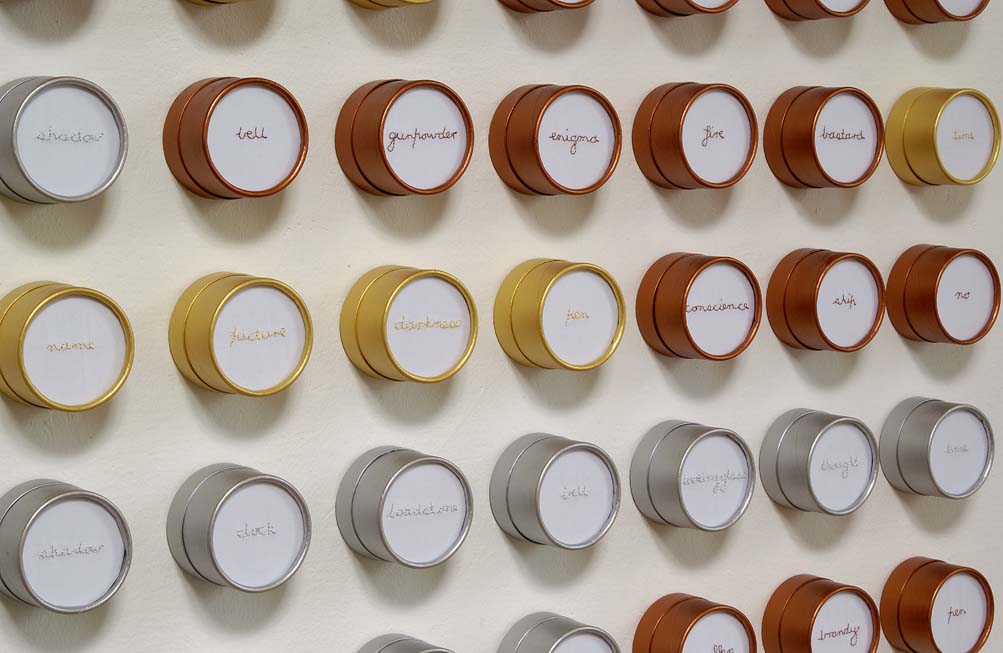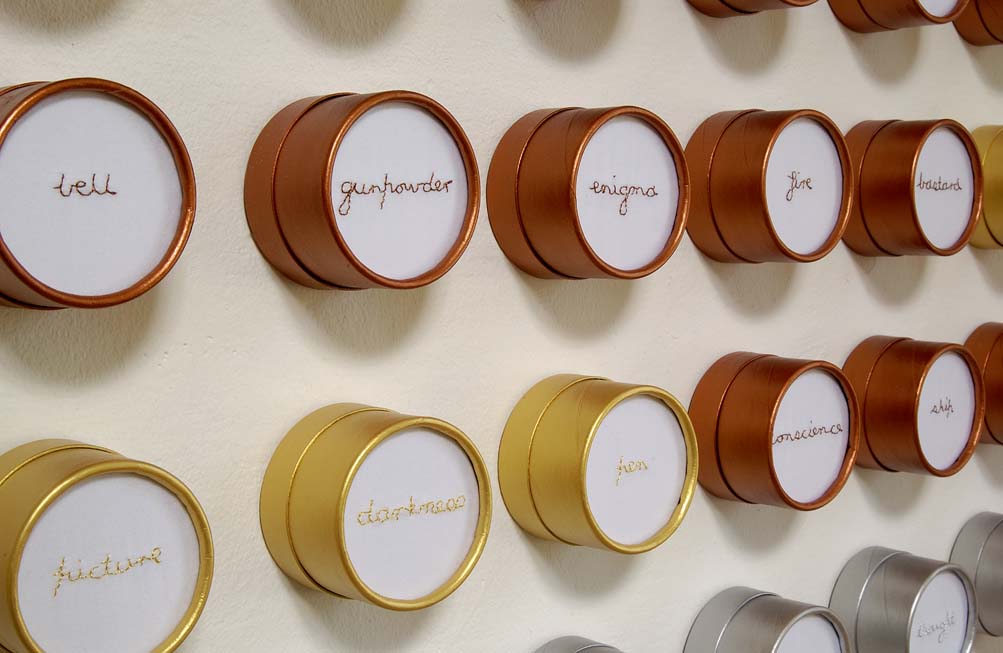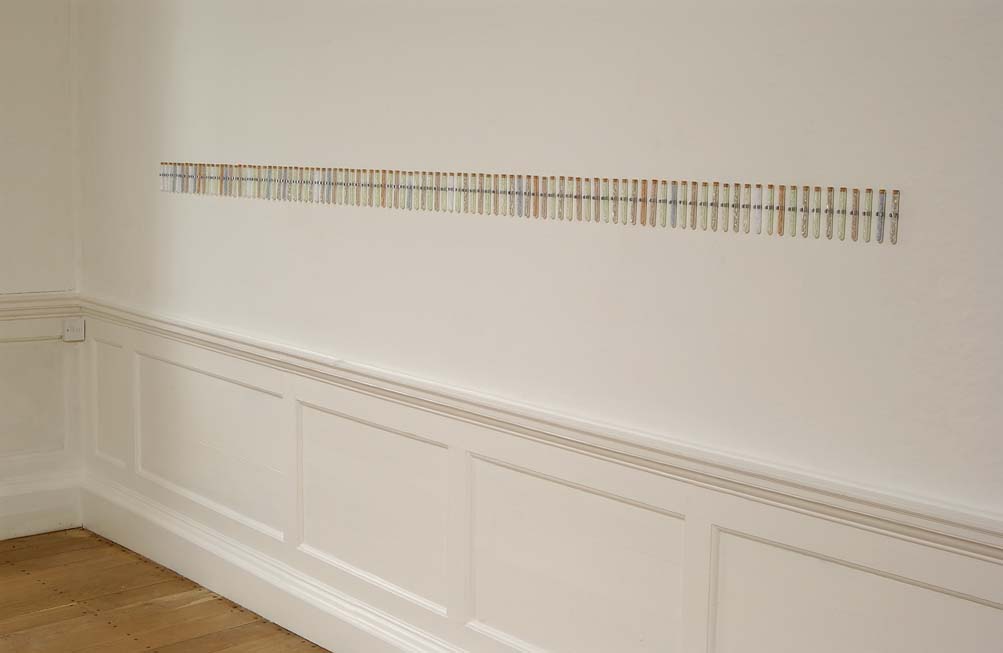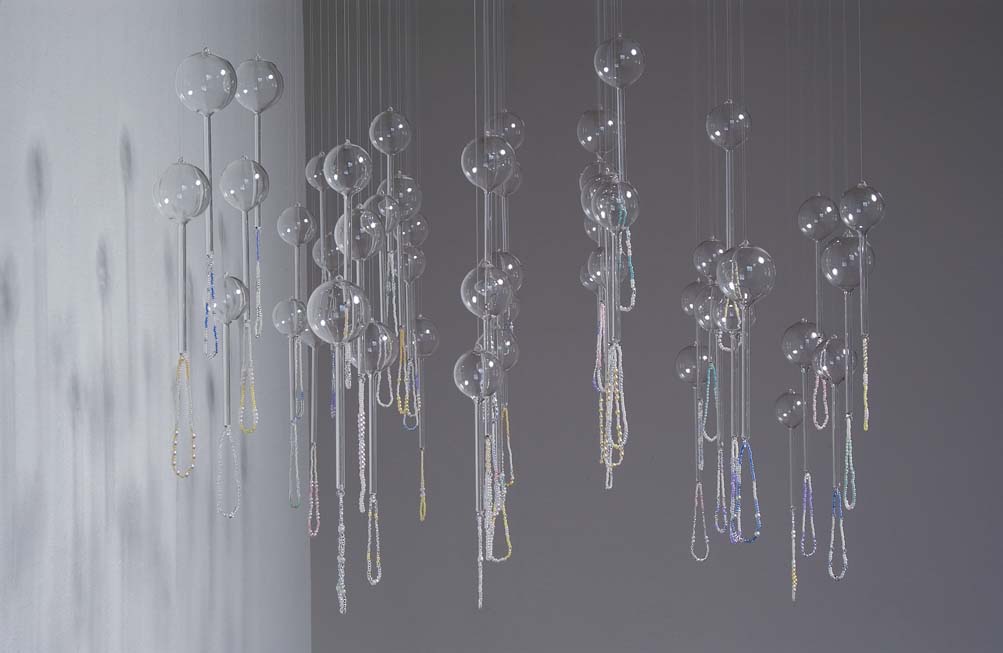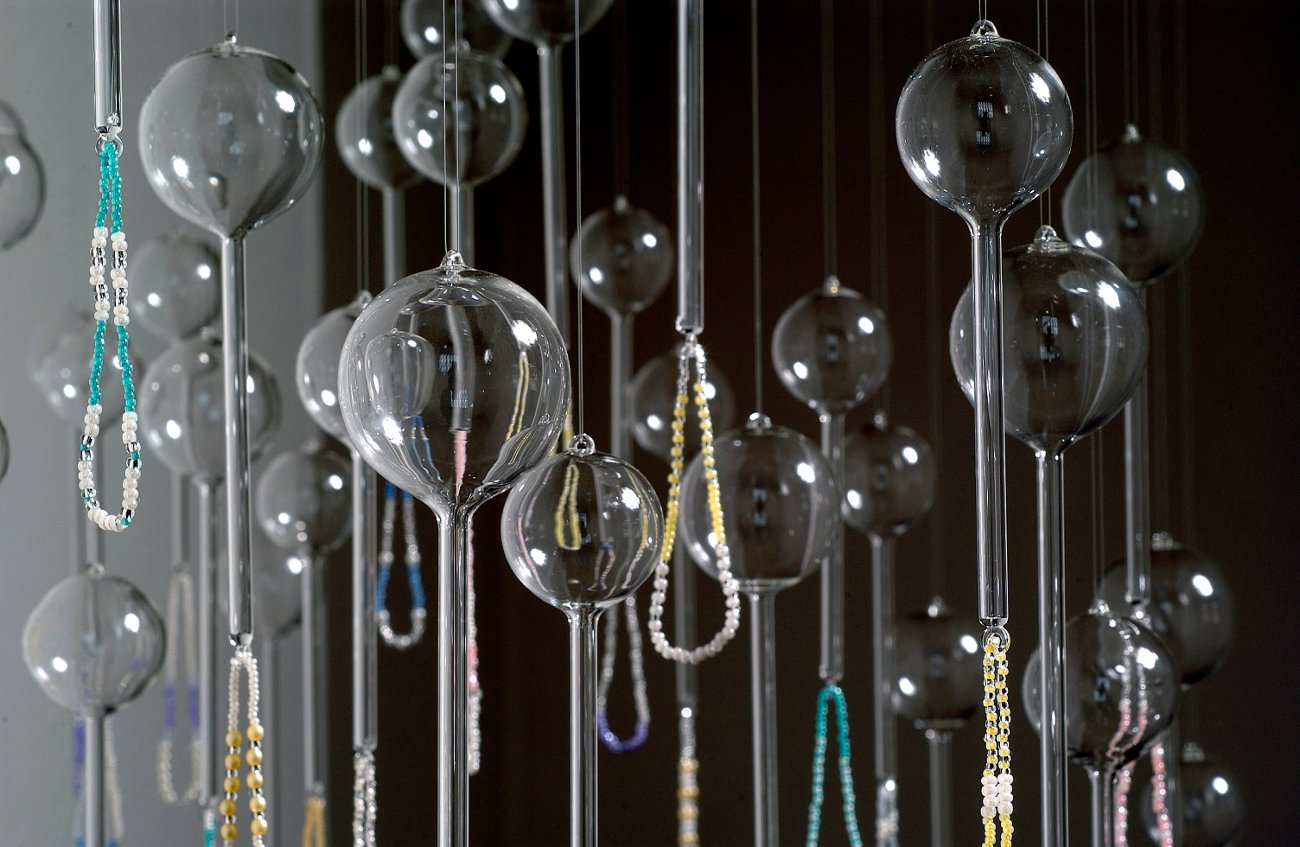Enigma 2004
A solo exhibition at Firstsite, Colchester
Enigma responded to the social history of the Georgian building in which Firstsite was housed, functioning previously as a private residence and a doctor’s surgery. The installation combined domestic, Victorian ladies’ craft techniques such as beading and embroidery with objects and ideas from the world of science including test tubes, specimen boxes, alchemy and mathematical formulae.
The exhibition title was taken from The Ladies Diary, a publication dating back to 1704, which was written by men and marketed to women to encourage them to take an interest in the sciences. One of the regular sections posed a series of cryptic clues, known as enigmas, where the answers were individual words such as shadow, echo, fire, bastard, darkness and jealousy. For Enigma 3: The Entomologist, these words were embroidered with metallic thread and placed inside entomology specimen boxes, which in turn were arranged in binary code order.
Enigma 2: The Scientist featured 100 test tubes, each filled with lengths of coloured thread. This technique refers to a once fashionable craft adopted by women from 1810 to 1820, when glass rods were filled with discarded needlework threads. Each colour represented different types of numbers such as prime, triangular, perfect or Fibonacci.
Enigma 1: The Anthropologist consisted of 50 glass-blown sculptures suspended from the ceiling. Their shape was inspired by glass objects, each holding a historical amulet, found in the collection of Gabriel de Mortillet, a Victorian French anthropologist. The amulets in Enigma are beaded; each drop comprised 100 beads arranged in coded mathematical sequence.
A PDF of One and One and One and One, an essay by Michael Stanley, former Director, Modern Art Oxford and Milton Keynes Gallery can be seen here:
